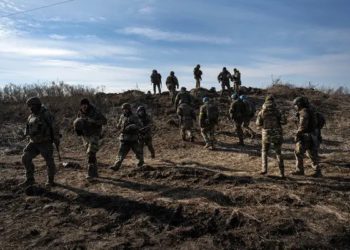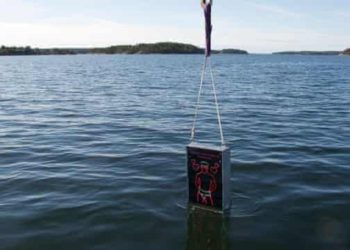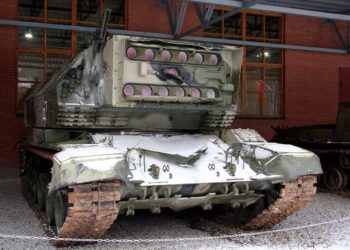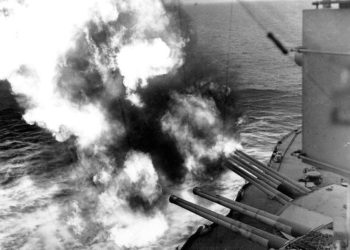Alfa Class Submarine: The MiG-31 of the sea.
Based on the K-222 Papa Class, the Project 705 Lira (Alfa Class) Nuclear Attack Submarines were intended on replacing the Victor class.
The Alfa was revolutionary in more than one way: It was powered by a miniaturised Nuclear reactor cooled by liquid Lead-Bismuth. The small reactor ran hot, enabling it to be more efficient than previous reactor designs while at the same time requiring less refuelling. However, due to the nature of its coolant, the reactor had to be kept running under load: if they were allowed to cool down, the lead-based coolant would solidify, killing the powerplant. Unfortunately, for Soviet engineers and mechanics, running the reactor under load constantly also led to higher wear and tear rates and therefore more regular service intervals.
The Alfa also benefited from a titanium hull! The double hulled vessel had a very streamlined outer-hull giving the Alfa the potential to be extremely manoeuvrable and fast. Building the hull with a titanium alloy enabled the designers to come up with very light and strong vessel. But building those submarines was a slow and expensive affair: New processes had to be created in order to mould, cut, shape, bend and weld such large titanium panels. Workers in pressurised “spacesuits” would toil in giant airtight warehouses flooded with argon gas in order to assemble the Alfas. Besides being light and strong, Titanium is also paramagnetic, making the submarine’s hull more difficult to detect by maritime patrol planes using Magnetic Anomaly Detectors.
Alfa Submarines were highly automated: In fact, most operations and systems on the Alfa were automated. The hull contained 6 sections, all accessible for maintenance, but only the central compartment (around the control room) was manned. Sailing and operating an Alfa at sea only required 8 sailors and officers, but the submarines were sent on in operation with a complement of 30 men to allow for some basic at-sea maintenance and repairs if needed: The Alfas were full of new and untested technologies!
All in all, the Alfa was a fearsome beast: It was smaller, lighter and faster than any other Nuclear Attack Submarines out there. Combining a small (82 metres long) light (2,300 tons) submarine with a 155-Megawatt nuclear reactors providing 40,000 horsepower was a recipe for eye-watering performance: Sustained top speeds of 41 knots (47 mph; 76 km/h) were regularly achieved. Several tests in excess of 80kph were conducted successfully, although such speeds inflicted damage on the hull and outer systems of the submarine. The characteristics of the Alfa enabled it to accelerate from 6 to 42 knots in just 120 seconds and conduct a 180 degrees turn at full speed in 40 seconds. The submarine’s exceptional buoyancy reserve also enabled it to change depth quickly.
The speed and manoeuvrability of the Alfa actually enabled it to outrun, out-manoeuvre and out-dive most torpedoes of the era.
However, the complexity of its power plant and onboard systems made the Project 705 Lira unreliabe and difficult to maintain at sea. The complexities and costs associated with manufacturing them meant that only 7 units were ever built. And the enormous amount of noise they generated when cruising underwater meant that they could never sneak in on their NATO counterparts.
As a result, Alfas were used as interceptors, kept on standby at port and ready to execute a high speed dash into the Atlantic in order to try and intercept convoys or Aircraft Battle Groups.
The first ever Alfa was decommissioned only 3 years after having been commissioned. 5 more were decommissioned in 1990 after having served between 9 and 12 years at sea. The last Alfa was decomissioned in 1996.
This is not to say Alfas did not make an impact: They were a formidable propaganda tool for the Soviet Union: NATO did not believe it possible or practicable to build titanium-hulled submarines. The West also doubted the Soviet Union possessed the know-how and skills necessary in metallurgy to pull it off. The automated suites developed specifically for the Alfa trickled down into subsequent Soviet and Russian submarine designs, enabling the Russian Navy to operate highly automated vessels with smaller crews than their Western Counterparts.
As for the West, the USA and Great Britain were spurred into developing torpedoes with the range, speed, and intelligence to reliably pursue Alfa-class submarines. This led to the deployment of the American ADCAP and British Spearfish torpedoes.
-RBM.










